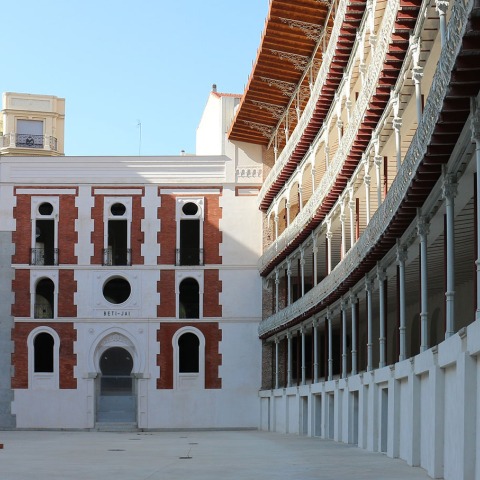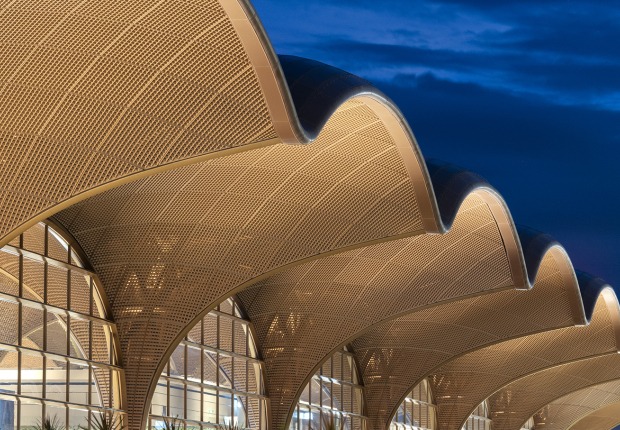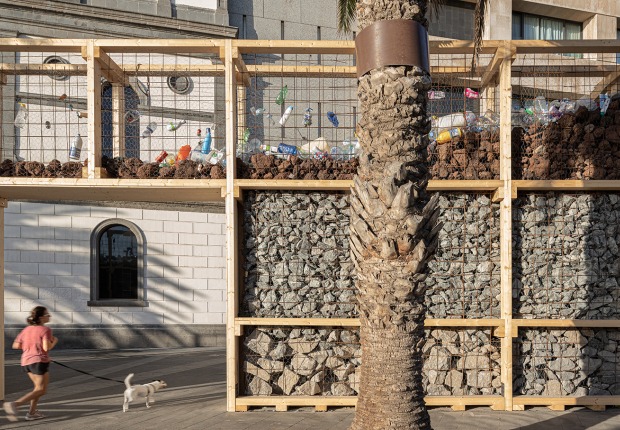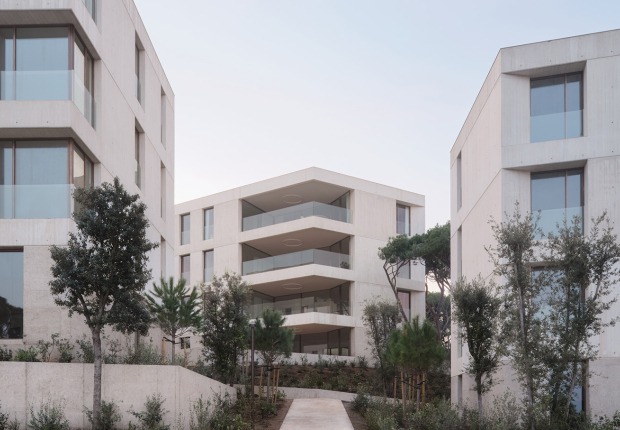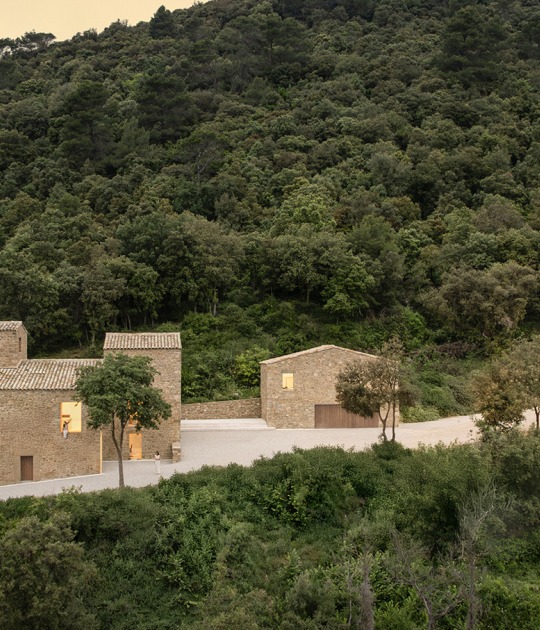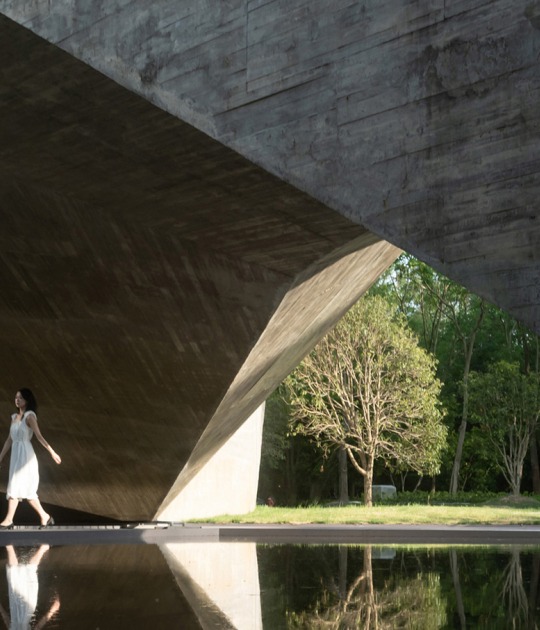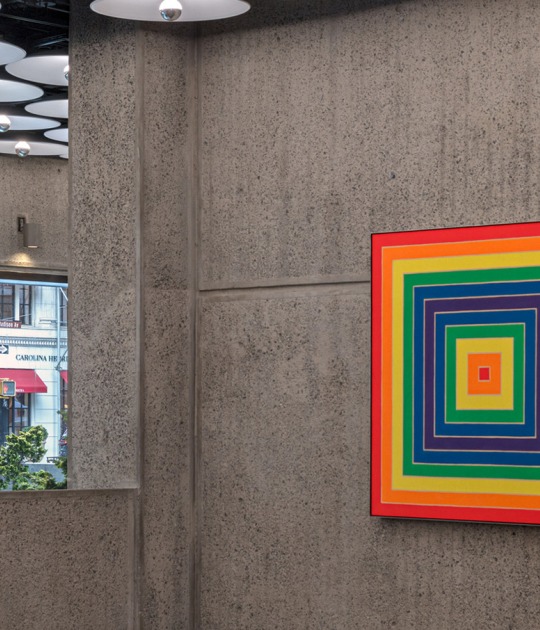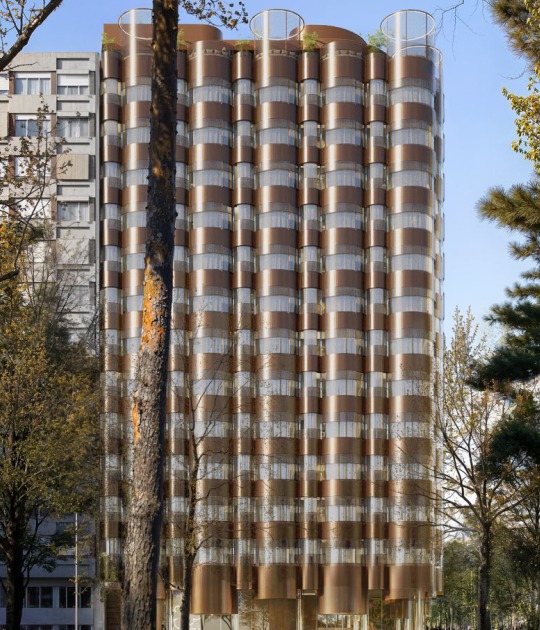Built in Madrid, on a site on Avenida de la Virgen de las Azucenas -now Marqués del Riscal, 7- in the district of Chamberí, the sports facility was commissioned by the company "Arana, Unibaso y Cía" to the architect Joaquín de Rucoba y Octavio de Toledo.
The building consists of the main body with a trapezoidal floor plan, a curved "L" shaped body that constitutes the bleachers; in front of this is the playing area, consisting of the court, the fronton, and its left wall reinforced by staggered buttresses on the outside. It is currently surrounded by residential buildings of six to eight floors, has an area of 3,609 m², a front of 39.5m to the street Marqués de Riscal and a depth of 126.7m.
The main body consists of three floors and two more mezzanine floors. This body, with independent staircases for access to different levels of the grandstand, was destined for a lobby with ticket offices, restrooms, and administrative offices.
The foundations of this complex are made of stone masonry and brick, the facade plinths and facings are made of granite masonry, and the rest of the facings are made of brick masonry.
The access door to the court, found at a lower level than the street, caused the existence of a semi-basement floor that is currently preserved. The body that houses the grandstand is formed by galleries open to the court with a continuous and slightly overhanging parapet, made of wrought iron railings. The front of the grandstand is divided into openings by fine cast-iron columns.
The large 67-meter long court is distributed over four floors covered by an interesting metallic structure with light partitioned vaults, decorated with paintings representing simple schematic plant ornaments. This light structure is an interesting and innovative ironwork of the time and is part of the typology of "iron architecture", where the metal harmonizes with the neo-Mudejar decoration of the factories.
The construction process of the grandstand consisted of the assembly of the general structure of pillars and beams, and the subsequent placement of light slabs of partitioned vaults of rasilla or wooden steps. The floor slabs, made up of iron beams and girders, are of great interest, as they present a curvature at certain levels that generate the inclination of the bleachers.
It is interesting to note the contrast between the light configuration of the inner façade of the grandstand made of iron and the treatment of all its neo-Mudejar and eclectic façades, made of brickwork. The main façade, in the Second Empire historicism style, while the north and west exterior façades of the grandstand are made of brick walls in the neo-Mudejar style.
The building is a remarkable example of the architectural duality characteristic of the last third of the 19th century, where historicist, eclectic, and neo-Mudejar forms enclose bold iron structures, giving rise to a rich spatial approach.
In May 2015, the Madrid City Council completed the process of expropriation of the fronton and acquired the Beti-Jai, thus initiating the work to recover it without altering its essence.
In July 2016, based on the verification of the advanced state of degradation caused by years of abandonment and lack of maintenance, the phase of structural consolidation and waterproofing of the roofs began. The ultimate goal of the work was to return the Beti Jai to its original state without altering its essence, but trying to comply with the necessary conditions of a public building today.
During the restoration of the building, the structure had to be reinforced without altering its aesthetics, managing to save and reinforce 95% of the rafters of the gable, including those with the characteristic curve that Rucoba designed to facilitate the installation of the bleachers.
The rehabilitation works were completed in early 2019 and during this process, thorough research work has been carried out (resorting to newspapers of the time, library documentary funds, collaboration with associations and experts) so that the new Beti-Jai would be as faithful as possible to the original.
The Beti Jai is the result of the effort, struggle and work of many people, from those who fought for so many years to bring it out of obscurity, to those who were determined to prevent it from being ruined even without knowing its final purpose, to those who have put so much care in faithfully replicating every minute filigree and detail of its parts by hand.
BIBLIOGRAPHY.-
- Dirección General de Deportes (2018). "Pliego de prescripciones técnicas del concurso de proyectos con intervención de jurado, destinado a la adecuación y rehabilitación del Frontón Beti-Jai." Madrid: Culture, Tourism and Sports Government Area - Madrid City Council.
- SOLER, Laura Murolas (2019). "El día en que el frontón Beti Jai de Madrid recuperó su luz." Madrid: Ferrovial Agroman. (Retrieved july 7th, 2021. https://blog.ferrovial.com/es/2019/05/dia-fronton-beti-jai-recupero-su-luz/).
